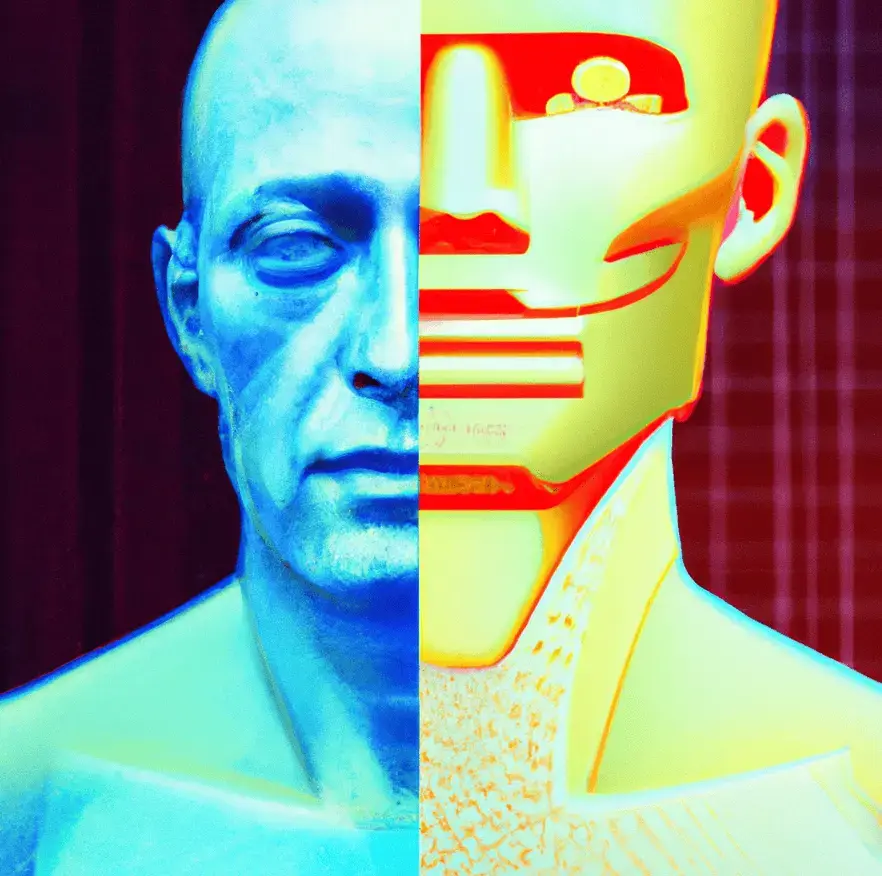Introduction
Yo, what’s good, internet? Welcome to my blog post about the wild, wild world of accelerationism. Now, I know some of you might be thinking, “Ugh, another boring article about some fancy words I don’t understand?” But hear me out, fam. This stuff is actually pretty cool, I promise.
Brief overview of accelerationism
Now, I know some of you might be thinking, “But wait, I thought accelerationism was just a fancy way of saying ’let’s go faster’?” And you’d be right, my dear Watson. But it’s so much more than that. It’s about taking things to the next level, pushing boundaries, and making things happen faster than ever before. It’s like that meme where the guy is running down the street with his arms out and the caption says, “I’m living my best life.” That’s what accelerationism is all about.
But enough about the boring stuff, let’s talk about the good stuff. Imagine being able to download all the books in the world into your brain, or having a robotic arm that can lift a car. It’s like having your own personal Ironman suit, except without the annoying AI assistant. Or, if you’re more of a “Ghost in the Shell” type, you could have a robotic body that can run faster than Usain Bolt. The possibilities are endless, my friends.
The advent of AI and its impact on society
Accelerationism, the belief that society should actively accelerate the pace of technological progress in order to bring about a desired outcome, has gained increasing attention in recent years. With the advent of AI and its potential to drastically alter the course of human civilization, the concept of accelerationism has become increasingly relevant. Whether we should actively push for the development of AI and other technologies, and the implications of such actions, is one that demands attention.
So, without further ado, let’s dive in and talk about the future of human society with the advent of AI. Just remember, as always, to keep an open mind and be ready for the unexpected. We’ll be gazing into the abyss and examining theories of accelerationism, the current state and future possibilities of AI, and the intersection of accelerationism and transhumanism. We will examine the potential consequences of widespread AI integration and discuss the ethical considerations of AI development. Our goal is to provide a comprehensive understanding of the complex and nuanced topic of accelerationism and its relationship to the future of human society. We will explore the potential benefits and drawbacks of accelerating technological progress and the impact it could have on humanity’s future.
TL;DR: Introduction to accelerationism, where we’re going faster and stronger with AI technology and the future of human society

Theories of Accelerationism
Historical context of accelerationism
The idea of accelerationism can be traced back to the 19th century, with thinkers such as Friedrich Nietzsche and Henri de Saint-Simon proposing the acceleration of technological progress as a means to bring about societal change. However, it wasn’t until the 1960s and 1970s that the term “accelerationism” was first coined, with the publication of books like “The Acceleration of History” by John Zerzan and “The Acceleration of Change” by Brian Pearce.
Left and right-wing accelerationism
Accelerationism can be broken down into two main branches: left-wing and right-wing. Left-wing accelerationism, also known as “progressive accelerationism,” argues that accelerating technological progress will ultimately lead to a more equitable and just society. This branch of accelerationism is often associated with Marxist and socialist ideologies. On the other hand, right-wing accelerationism, also known as “neoliberal accelerationism,” argues that accelerating technological progress will lead to a more efficient and capitalist society. This branch of accelerationism is often associated with libertarian and capitalist ideologies.
Let AI do the heavy lifiting. Read all about UML Diagrams with ChatGPT
Critiques of accelerationism
Accelerationism has not been without its critics. Some argue that accelerationism ignores the potential negative consequences of rapidly advancing technology, such as increased inequality and loss of privacy. Others argue that accelerationism is too optimistic about the ability of technology to solve societal problems and that it ignores the need for structural changes in society. Additionally, some argue that accelerationism is a form of technofascism, in which technology is used as a means of control and oppression. It’s important to note that critiques of accelerationism come from both the left and right wings, and the topic is complex and requires deeper understanding.
AI and the Future of Society
Advancements in AI technology
The field of artificial intelligence has seen incredible advancements in recent years, and the potential of AI to revolutionize various industries and improve our daily lives is astounding. From self-driving cars to intelligent virtual assistants, AI technology is already being integrated into many aspects of our lives. Advancements in machine learning and deep learning have also led to the creation of AI systems that can perform tasks that were previously thought to be the exclusive domain of humans, such as image and speech recognition. With these advancements, the capabilities of AI are only set to increase in the future, and the possibilities for what AI can achieve are endless.
Potential consequences of widespread AI integration
As we continue to push the boundaries of what is possible with AI, it is important to consider the potential consequences of widespread AI integration. One of the most commonly discussed potential consequences is the potential loss of jobs, as many tasks that are currently performed by humans may be automated in the future. However, it’s also possible that the integration of AI technology could lead to the creation of new jobs, as well as increased efficiency and productivity across various industries. Additionally, AI can also help to address some of the world’s most pressing issues, such as climate change and healthcare.
Ethical considerations of AI development
As we continue to develop AI technology, it is crucial that we consider the ethical implications of its integration into society. One of the most pressing ethical considerations is the issue of bias in AI, as AI systems can inadvertently perpetuate societal biases and discrimination. It’s also important to consider the issue of transparency, as the inner workings of many AI systems are complex and difficult to understand. Additionally, we must consider the issue of accountability, as AI systems can make decisions that have significant impacts on individuals and society as a whole.
In conclusion, while there are certainly challenges to be faced in the integration of AI into society, the potential benefits are immense. With careful consideration of the ethical implications of AI development, we can work towards a future in which AI technology is used to improve the lives of all individuals and to address some of the world’s most pressing issues. And as we progress, we can have a positive, hopeful, and inspiring future for the human society.

Accelerationism and Transhumanism: A Complex Intersection
The intersection of accelerationism and transhumanism
Accelerationism and transhumanism are both ideologies that seek to push the boundaries of what is possible with technology, but they differ in their ultimate goals. Accelerationism is primarily focused on using technology to accelerate societal change, while transhumanism is focused on using technology to enhance and transcend human capabilities. However, the two ideologies intersect in their shared belief that technology can be used to improve the human condition.
When examining the intersection of accelerationism and transhumanism, it’s important to consider the potential benefits and drawbacks of merging technology with humanity. The merging of technology and humanity has the potential to bring about numerous benefits, such as an increased lifespan, enhanced physical and cognitive capabilities, and an improved overall quality of life. However, there are also potential drawbacks. One of the most significant concerns is the potential for inequality, as access to these technologies may not be evenly distributed among the population. Additionally, there are also concerns about the potential for unintended consequences, as the merging of technology and humanity could lead to unforeseen ethical dilemmas. Furthermore, the idea of merging technology with humanity raises the question of what it means to be human and what the implications are for human identity and agency.
Potential benefits and drawbacks of merging technology with humanity
It’s crucial to engage in a critical and nuanced examination of the intersection of accelerationism and transhumanism. This includes considering the ethical and societal implications of these technologies and ensuring that they are developed and used responsibly. It’s also important to consider the long-term impact of these technologies on human society and humanity as a whole. As such, it’s important to approach the intersection of accelerationism and transhumanism with a balanced perspective, considering both the potential benefits and drawbacks, and taking a proactive stance to minimize any negative impacts.
In conclusion, the intersection of accelerationism and transhumanism is a complex topic that requires a multidisciplinary approach. This includes considering the potential benefits and drawbacks, and taking a proactive stance to minimize any negative impacts. It’s important to approach this intersection with a balanced perspective and a deep understanding of the implications for the future of humanity.
Final thoughts on the Post-AI Society
Alright folks, it’s time to end this rant. I know, I know, it all sounds like a bunch of fancy words that you’d only hear in a sci-fi movie. But hear me out, because this stuff is actually pretty important.
First off, let’s break it down. Accelerationism is all about making things happen faster, and transhumanism is all about merging technology with humans. Put those two together, and you get a bunch of people talking about how we should all be cyborgs by now.
Now, I know some of you are thinking, “Oh great, just what we need—more robots taking our jobs,” but hear me out. There are definitely some benefits to all this techy stuff. Imagine being able to download all the books in the world into your brain, or having a robotic arm that can lift a car. It’s like having your own personal Ironman suit, except without the annoying AI assistant.
But with all the benefits come some potential drawbacks. We’ve all seen the movies like “Blade Runner” or “Ex Machina” and we know how things can turn out if we’re not careful. It’s important that we consider the ethical implications of all this tech before we go full steam ahead.

So in conclusion, let’s not get too caught up in the hype. Sure, having a robotic arm would be pretty cool, but let’s make sure we’re doing it for the right reasons. And if you do end up with a robotic arm, please, for the love of god, don’t use it to hack the Pentagon.
TL;DR: accelerationism and transhumanism are important topics to consider, but let’s be careful with how we implement it and not get too caught up in the hype.
Tired of managing hundreds of tabs? Discover how to Stay Organized in Chrome
